This content was published: August 29, 2012. Phone numbers, email addresses, and other information may have changed.
Largest solar array in state shines at PCC
Photos and story by James Hill
The largest solar array in the state is at Portland Community College.
The college introduced the 35,000-square-foot solar array, based at the Rock Creek Campus, to the public, and state and local officials in May (see photo gallery below). The project’s construction was funded by dollars from the 2008 bond measure and is expected to produce nearly 10 million kilowatt hours during the next 20 years.
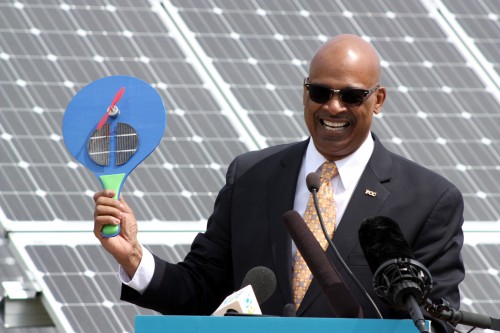
PCC District President Preston Pulliams holds up a solar-powered paddle fan, a gift given to invited guests at the solar array unveiling on Friday, May 18 at the Rock Creek Campus.
Margi Hoffman, Governor John Kitzhaber’s energy policy advisor, said the solar array reflects smart business by using energy efficiency, which she said is the cheapest way to meet energy demand. She added that the array will provide PCC with more stability in its energy bills and the investment will help create jobs.
“This is really exciting,” Hoffman said. “On behalf of the Governor I really want to commend Portland Community College for working diligently to transition their buildings to a clean energy future. They are working actively to make their buildings more energy efficient and to find ways to power their buildings through onsite renewable energy generation.”
The 500-kilowatt array is a partnership between PCC and The Energy Trust of Oregon, SolarCity, SolarWorld and the Oregon Department of Energy. State Rep. Jules Bailey, who co-chairs the Energy, Environment and Water Committee in the House, applauded the partnership.
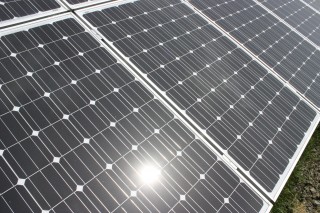
The array will be owned, operated and maintained by SolarCity. The college will have the option to purchase it after 20 years.
“PCC has made an investment in our future by making an investment in clean power that meets our energy security goals, meets our national security goals and meets our jobs security goals,” he said.
The array will be owned, operated and maintained by SolarCity, and sheep from the school’s farm will help keep weeds away from the panels by grazing around, and under it. The college will have the option to purchase the array after 20 years. PCC is required to spend 1.5 percent of the value of its capital projects on solar energy initiatives and this project meets that requirement.
“This is a great partnership between local businesses and the community and the college that serves them,” said Rock Creek Campus President David Rule. “You can’t beat it.”
Rule said Rock Creek Campus staff and faculty have already given tours to school children, who can see how much carbon has been saved and how much energy is being produced at meter stations by the array. He said the main benefit is that it will enhance existing PCC academic programs all over the district that focus on green jobs and green innovations. For students in physics, science, math, microelectronics, engineering, quality control and land use, the array will be a key tool in their learning.
“This is a learning example for the college and for the students coming out of the college, who will only help to promote and define what renewable energy is moving forward,” said Kip Barrett, project development manager for SolarCity. “PCC is fantastic.”
PCC and SolarWorld have already enjoyed a long-standing relationship where faculty provide workforce development assistance to the company. Gordon Brinser, President of SolarWorld Industries America, said his company has established a scholarship through the PCC Foundation to promote diversity, serving nine students to date.

Sheep from the school’s farm will help keep weeds away from the panels by grazing around, and under, the array.
“PCC has truly walked the talk when it comes to buying local and supporting local manufacturing and we are grateful for your leadership,” Brinser said. “Our nation’s future economic status relies, in part, on leadership like this because American manufacturing is our economic lifeblood.”
Washington County Commissioner Greg Malinowski said the unemployment rate among local counties is lower in Washington County and he partially credits PCC for that.
“When an employer comes to this area he can count on the fact that if he needs a workforce or workforce training he can work with PCC to have classes set up to help him find employees that are trained and ready to go, which helps his bottom line,” Malinowski said.
District President Preston Pulliams said the new solar facility shows that PCC is dedicated to its Climate Action Plan and its sustainability program. As part of that plan, PCC wants to reduce carbon emissions at PCC by 80 percent to get below the levels of 1990 by the year 2050.
“This project will help the college certainly move forward in meeting that goal,” Pulliams said. “The college will generate more energy and spend public dollars far more effectively and efficiently. The college looks to save more than a million dollars over the long term as a result of this exciting partnership.”


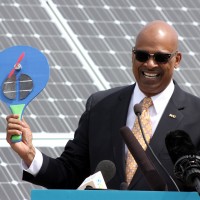
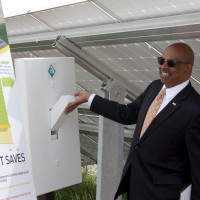

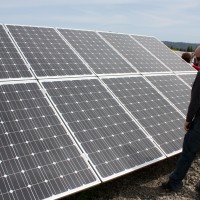


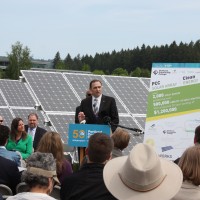
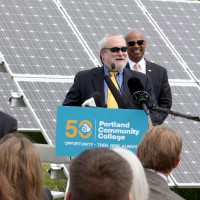
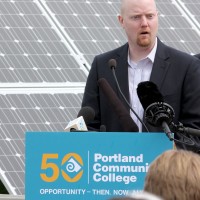
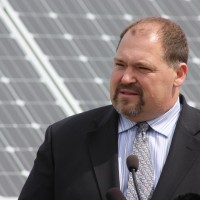

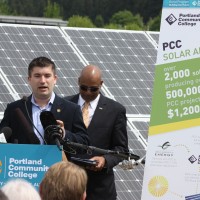
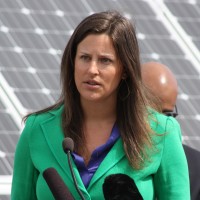
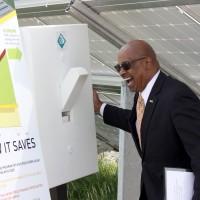
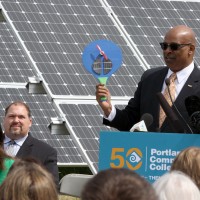

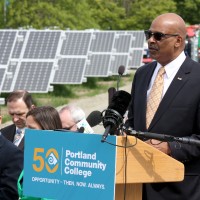
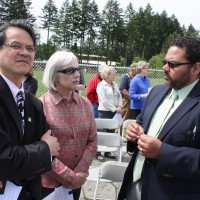
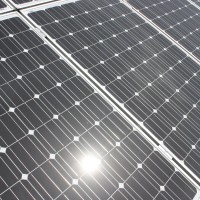
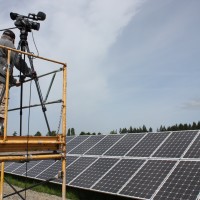


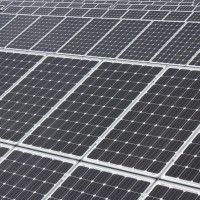
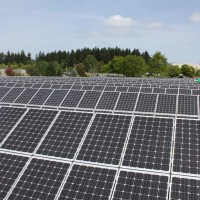
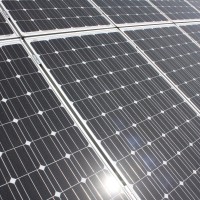
I am so impressed by this and proud to go to a school that cares so much about the environment and the well being of others. I hope that more business and individuals can be inspired to do the same. I know that it would benefit our future greatly.
I would like to know if you are taking any volunteers at the moment to join a committee to help out in any way?
If so please contact me.
Thank you.
I am confused. Does the school own the array or not? “The project’s construction was funded by dollars from the 2008 bond measure and is expected to produce nearly 10 million kilowatt hours during the next 20 years.” and then later in the story….”The array will be owned, operated and maintained by SolarCity, and sheep from the school’s farm will help keep weeds away from the panels by grazing around, and under it. The college will have the option to purchase the array after 20 years.”
Who paid for this?? Did the tax payers?? Because it sounds like it, and if that is the case then why does a private company own it?? AND then on top of that are they charging the school for the energy from it?? Sounds like a stupid investment if that is the case (as written). Like the sheep from the school that will maintain it, I love how everyone follows along because it’s clean. That’s great, but if this is how it was obtained then we are getting scr#####.
I too am confused. While i find the addition of a solar array at my campus a step forward but the entire ownership issue and 20 year timeframe makes no sense and should be further explained to students and taxpayers. Does the college get free power from it currently? Are we paying Solar City for power obtained from this site for the next twenty years? Why does the college have the option to purchase in 20 years?, why was it not built for the college strictly to make it electricly independant from the start? Its expected to produce 10 million kilowatt hours over the next 20 years, but where do these kilowatts go during that time? To the school? Owned and operated by a private company makes this sound more like a long term business deal rather than a shining light to help the college pay its energy bills thru green power.
Gordon Brinser, President of SolarWorld Industries America ststes the following-
“Our nation’s future economic status relies, in part, on leadership like this because American manufacturing is our economic lifeblood.”
Please explain-
I agree with Rena and Willy; this looks like something the college was required to do, use college tax money to pay for it, and now who benefits? A private company!
This whole thing just reeks of political palm greasing.
Sorry to be so negative over a move forward, but I think the step forward was really a side-step.
Hi everyone. While I understand your confusion about the funding for this project, it is not something you should be getting up in arms about. Solar installations are expensive just like your house is expensive. You got a loan from the bank to buy your house, many non profits need help to buy the solar (i.e. they are non profit!). Usually, this works out where a third party funds the solar installation and ‘leases’ it to the school. The school gets to stretch the payment out without hefty loan interest payments and they end up paying an equivalent amount to what they paid for electricity before, often even less. This benefits the third party because they get all sorts of tax right offs, and it benefits the school because they can afford to put up solar without a huge investment upfront. Do you think people would sit by while the school shelled out a $1,000,000 for solar when the classrooms need updating and the students need teachers?
I agree with the others- why doesn’t the school own this? Some clarification is needed on this matter. Also, that photo is just silly looking, and not very dignified. It seems to be equating responsible solar energy with a toy. Otherwise, I’d say this is great news – more solar in sunny Portland!
One point to make is that Solar cells last for 20-40 years, depending on how they are made, so it is not necessarily always best to buy them out front, but this completely depends on the life and cost of each panel. It would be interesting to find whether Solar City will replace aging cells, or attempt to sell PCC 20 year old cells.
The point here I think is that to PCC it is the “cheapest way to meet energy demand.” Bottom line is that this is probably true for the expanding college and energy needs associated with new technologies, and the fact that (coal and oil) energy companies can and are known to fluctuate their prices overnight and blame it on all kinds of things, while they make out with billions of dollars in profit. Solar is a dependable and stable energy worth investing in. I don’t think we should be getting caught up in ownership, but in the overarching theme: Cheaper, Cleaner, and more Stable Energy = Good. :)
Great questions everyone… here is some additional information that will help shed some light..
• The college is committed to sustainability both in its practices and in its capital developments.
• The project fits into the college’s 2009 Climate Action Plan that pledges to reduce carbon emissions by 80% below 1990 levels by 2050.
• The Oregon Dept. of Energy requires that the 2008 bond program spend 1.5% of the value of applicable capital projects on solar initiatives.
• Aggregating smaller projects throughout the PCC district into one large facility allows the college to generate more energy and spend public dollars efficiently and effectively.
• Under this agreement the average cost of energy per kWh (kilowatt hours) over the 20-year period will be approximately $0.083 cents allowing for significant long-term savings.
There are two significant energy cost risks to Oregon education systems, businesses and residents:
1) Energy cost increases, potentially advancing at rates far exceeding our regional cost of living indices, and
2) Energy cost volatility, creating great difficulty in planning for future costs and allocating the maximum level of PCC resources possible to educating our students.
Under the agreement with Solar City, the overall “life of system” cost per kWh produced by the solar facility is at a fixed rate, and offers PCC significant costs savings over its expected long-term energy costs.
• The installation will be funded, owned, built and operated by SolarCity, a private company that was selected through a competitive RFP process.
• The value of the installation will be approximately $2.5 million.
• SolarCity will lease the property through a Site License Agreement. The power they generate will be fed into the PGE power grid through to Rock Creek Campus Building 9, directly offsetting campus electrical use.
• The structure of the deal is outlined in a Power Purchase Agreement, whereby PCC prepays $830,000 for 20 years of energy (with contractual safeguards.)
• Federal, State, and Energy Trust of Oregon incentives will be used by SolarCity in their financing structure.
So basically PCC pays for the next 20 years of electricity up front (10,000,000 kwh times $0.00083/kwh), and do they pay the other $167,000 for the remaining electricity?